Table Of Contents
Introduction
Imprinted in an extremely unique Asian-European architectural interference, An Dinh Palace was built as a magnificent ancient European castle, with traditional royal decorative motifs.
This is an architectural work that is completely different from hundreds of relics belonging to the complex of Hue monuments.
- You may be interested in our high-quality Hue Tours by local guides such as the Hue cycling tour, Hue city group tour, Jeep tour from Hue to Hoi An, Hue City Tour Half Day, Hue Royal Tombs Tour, and Hue Street Food Tour.
Plus, after a great time in Hue city, you may need our Hue private car transfers to other destinations such as
- Hue to Hoi An Private Car– 1,500,000 VND/ Sedan Car
- Hue to Dong Hoi private car– 2,100,000 VND/ Sedan car
- Hue to Phong Nha private car– 2,200,000 VND/ Sedan car.
- Hue to DMZ private car– 1,700,000 VND/ Sedan car
Video about An Dinh Palace Hue
An Dinh Palace Hue Location
This ancient palace is located right on the bank of An Cuu river, at 179B Phan Dinh Phung, De Bat ward, Hue city.
An Dinh Palace Hue was built in 1917, this is a unique building associated with the last Nguyen Dynasty emperors such as Khai Dinh, Bao Dai, Nam Phuong empress and Bao Long Prince.
An Dinh Palace History
An Dinh Palace, formerly known as Phung Hoa Palace, is a wooden construction located on the bank of the An Cuu River. An Dinh Palace Hue Vietnam was built by Dong Khanh Emperor for his eldest son – Khai Dinh – as a private palace to live from when Khai Dinh was still Crown Prince until the day he ascended the throne.
After the coronation day, in 1917, Khai Dinh Emperor used his own money to start renovating Phung Hoa palace in a modern way, turning the original wooden palace into the most magnificent, luxury castle in Vietnam at that time. Also, it was renamed An Dinh Palace.
Continuing the tradition from the previous generation, Khai Dinh handed over his An Dinh palace Hue to Vinh Thuy Prince (later Bao Dai emperor). After the August Revolution, 1945, Bao Dai abdicated, along with his family, Nam Phuong empress, Tu Cung Empress Dowager, and other princes and princesses, moved from Hue Imperial Palace to An Dinh to live here.
An Dinh Palace Hue, Vietnam Architecture
Recognized by UNESCO as a World Cultural Heritage, An Dinh Palace Vietnam is a typical representative of the neo-classical architecture in Vietnam in the early 20th century.
The whole palace was built with an area of over 23,000m2, facing the south side of the An Cuu river. Originally, when it was still intact, the palace had about 10 large and small monuments including the boat wharf, main gate, Trung Lap pavilion, Khai Tuong floor, Cuu Tu Dai theater, animal cage, and the lake.
After more than 100 years and the destruction of the war, until now, only three buildings remain intact, namely the main gate, Trung Lap bower, and Khai Tuong building.
The Main Gate
Looking from Phan Dinh Phung street, the main gate is built following the three-door brick entrance, consisting of two floors, embossed with the elaborate decoration of crockery and colored glass.
The motifs are images that are very familiar to Eastern culture such as dragons, phoenixes, unicorns, turtles… The arch of the gate is embossed with three words “An Dinh Palace“. In addition, there are pairs of pillars embossed in Roman style.
The main gate looked from the inside out, surrounds the entire palace with a brick wall 0.5m thick, 1.8m high, with a barricade fence on top. The top of the roof of the main gate has the symbol of a large pearl.
Trung Lap Bower
Behind the main gate, in the middle of the courtyard is Trung Lap bower, which acts as a “front screen” – a very familiar architectural feature in the Nguyen Dynasty that continues to this day. It is often found in mausoleums, palaces, or garden houses.
Trung Lap bower has an octagonal shape, an ancient roof with two layers. The lower roof layer has eight sides, the upper layer has four sides. The roof of Trung Lap bower has an impressive visual art, embossed with 12 dragons with the meaning of flying in “four directions and eight ways”. In the bower, there is a bronze statue of Khai Dinh emperor, cast following the scale of a real person in 1920.
Khai Tuong Building
The highlight for the entire architecture of An Dinh palace is the building that is likened to a European castle, named Khai Tuong. The building is located right behind the “Fengshui screen” of Trung Lap bower, the main architectural work of the palace. The name “Khai Tuong” was given by King Khai Dinh himself with the meaning of the place where good omens originate.
Khai Tuong building has three floors built with new materials in the style of a European castle, on an area of 745m2. The front is elaborately decorated with modern Roman motifs interwoven with traditional oriental royal motifs of the four holy animals.
Khai Tuong Building has a total of 22 large and small rooms. In particular, the 1st floor has seven splendidly decorated rooms, the most prominent is the hall. The second floor consists of eight rooms for living and resting. The third floor has seven rooms, the former residence of Tu Cung Empress Dowager, and a worship place.
The most unique feature of Khai Tuong’s building is the hall, which features six decorative murals, vividly and accurately painted with the six Hue Royal Tombs of the Nguyen Emperors: from the tomb of the First Emperor Gia Long, in turn. According to the timeline, are the mausoleums of Minh Mang Emperor, Thieu Tri, Tu Duc, King Dong Khanh, and the tomb of Khai Dinh Emperor.
Over time, these paintings have been seriously degraded, but German experts have helped restore the originals of these unique works. So far, the identity of the author of these six murals is still a secret, but all of them are considered masterpieces of Vietnamese mural art in the early 20th century.
In the middle of the hall is a bronze statue of Vinh Thuy Prince, who was later the Bao Dai Emperor, the last emperor of Vietnam.
The living room and dining room are in European style, facing each other across the hall. At the end of the hall is a staircase leading to the second floor. From carpets, pillars, stair handrails to floral motifs, all were very modern with Western-style, which was rare at that time.
Previously, the eight rooms on the second floor were mainly used for living and resting, but now they have become information storage rooms and display artifacts used by the two emperors at An Dinh Palace.
Cuu Tu Dai Theater
Behind the Khai Tuong building was once a very special monument, the Cuu Tu Dai theater with an area of 1,150m2, including two floors with a capacity of 500 people.
This is the place for performing classic drama and reforming theater for the royal family under the reign of the Bao Dai emperor. The stage system is located in the middle of the first floor. The grandstand is designed on both floors around the stage; the honor stand on the second floor is dedicated to the king and royal family, the great ministers, envoys. civil servants.
The architecture of this theater is in the architectural style of the Hanoi Opera House, but the interior is similar to Khai Dinh’s mausoleum with embossed decoration with porcelain mosaic art. Unfortunately, the Theater was demolished in 1947, leaving only the foundation of the large lawn behind the Khai Tuong building as it is today.
An Dinh Palace Travel Guide
An Dinh Palace Entrance Fee & Opening Hours
To admire the beauty of this unique palace, you have to buy an entrance ticket. It costs 50,000VND (roughly 2USD)/ Person for adults/ children from 12 years old. Children under 12 years old are free of charge.
The opening hours at An Dinh Cung are from 7 am to 17:00 every day, even on Tet Holiday. So it is very convenient for you to plan the Hue City Tours.
How to get to An Dinh Palace?
If you would like to visit An Dinh Palace as well as other highlight attractions such as Hue Imperial Citadel, Hue Royal Tombs, you must book Hue City Group Tour, Hue City Tour By Private Car. If not, you can ride a bike, drive the scooters with helmets or walk to An Dinh Palace from your hotel/ homestay in Hue city.


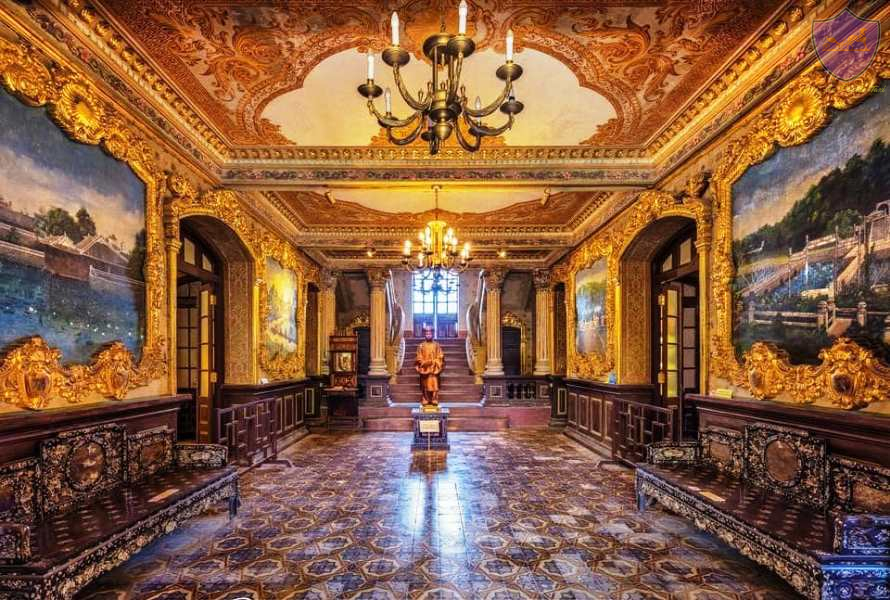

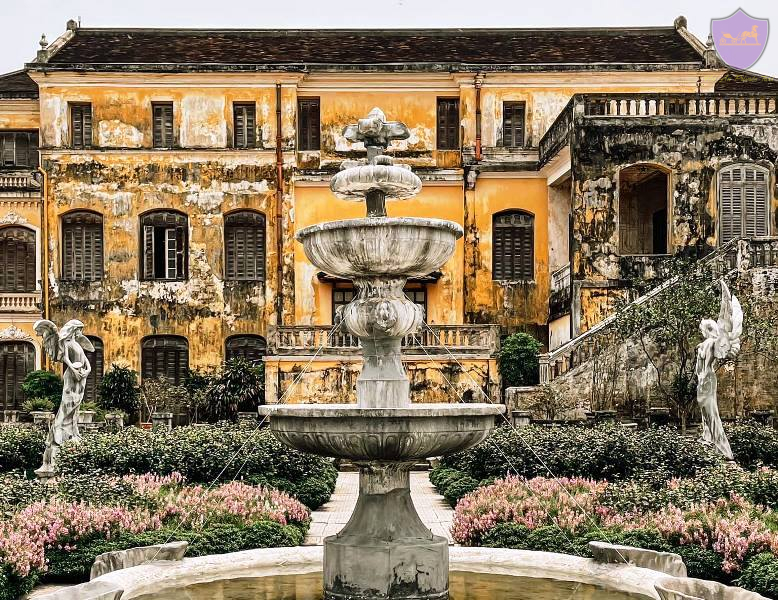

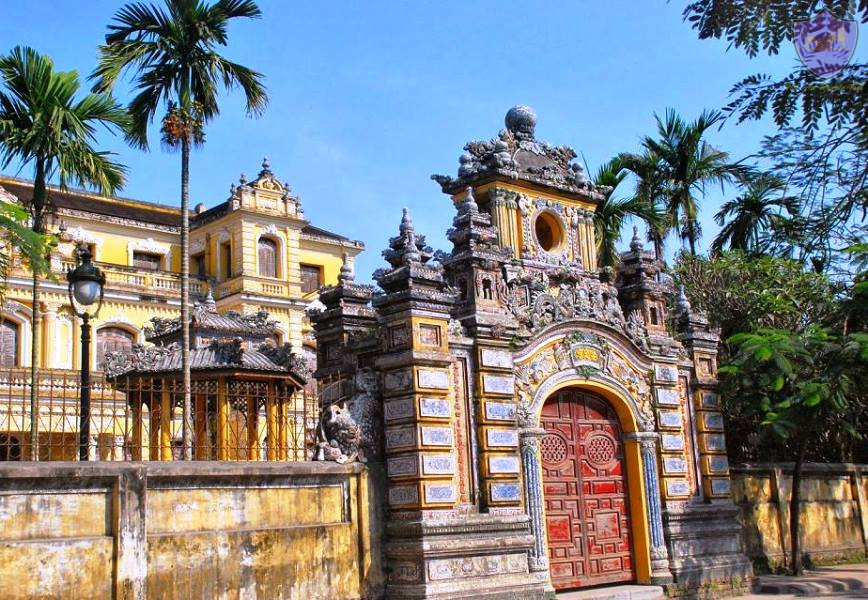
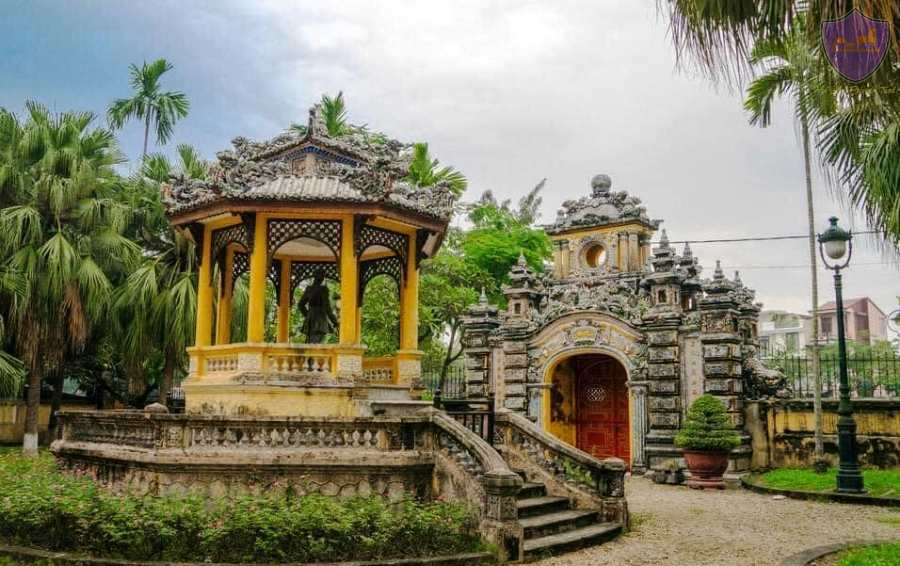


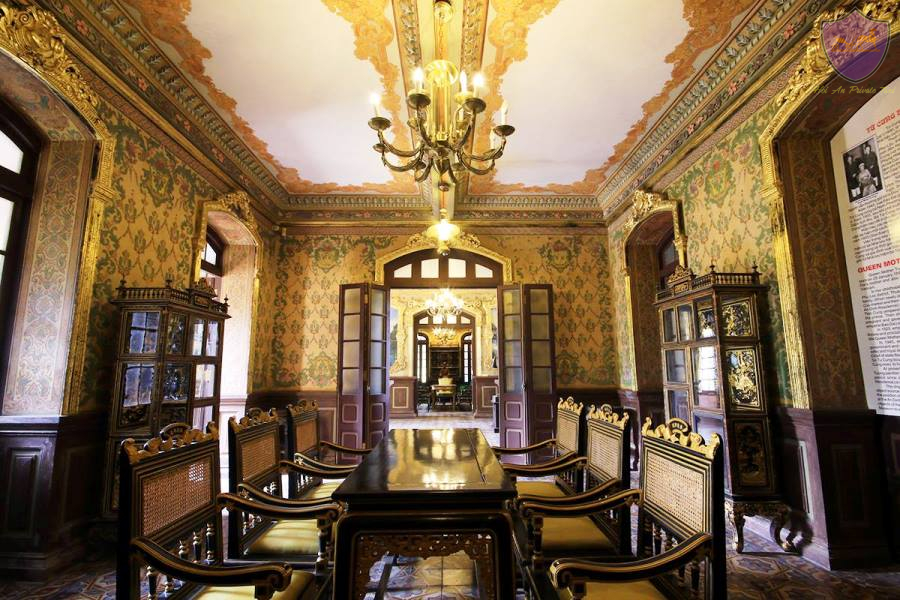




Pingback: Thanh Toan Bridge- The Oldest Bridge In Hue, Vietnam - Hoi An Private Taxi
Pingback: Hue Entrance Fee In 2023 Updated - Hoi An Private Taxi
Pingback: Khai Dinh Tomb - Nguyen Dynasty Architectural Pinnacle - Phong Nha Locals Travel & Transport